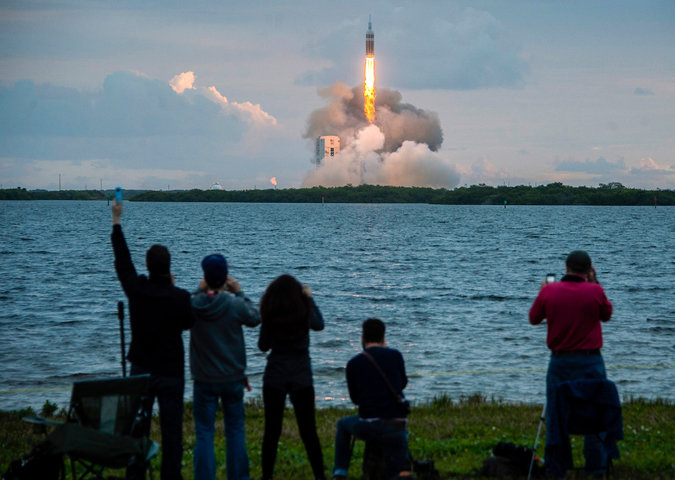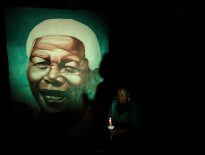NASA’s new Orion spacecraft passed its first flight test on Friday, marking the start of what the space agency hopes will be a new era of human exploration beyond Earth’s orbit.

Carrying only test equipment and some souvenirs, the 19,000-pound capsule splashed down in the Pacific Ocean 600 miles southwest of San Diego about four and a half hours after it was launched into orbit from Florida. NASA said that the spacecraft had functioned nearly flawlessly throughout the brief flight and that the capsule landed just a mile off target.
“There is your new spacecraft, America,” a NASA spokesman, Mike Navias, said as Orion gently descended, its three main orange-and-white parachutes framed against wispy clouds in an otherwise blue sky.
“It’s a good day,” W. Michael Hawes, Orion program manager for Lockheed Martin, which built Orion, said at a news conference in Florida two hours after splashdown.
For the space industry, public and private, the test was a welcome success after two recent disasters. In late October, a commercial cargo rocket bound for the International Space Station exploded after liftoff in Virginia. Two days later, a rocket being developed by Virgin Galactic to take private citizens on short space jaunts disintegrated during a test flight in California, killing a pilot.
NASA’s test, though, appeared to go off with just a few minor hitches. One of the few reported problems occurred after the splashdown, when two of five airbags designed to keep the capsule upright in the water did not fully deploy. But the failure had no effect on the recovery.
The 11-foot-long capsule, which had slowed from a maximum speed of about 20,000 miles an hour to 20 just before it splashed into the water, will be towed to San Diego and eventually trucked back to Kennedy Space Center in Florida. Engineers and technicians will pore over it and analyze reams of data collected by sensors during the flight to determine how well the spacecraft’s systems and parts, including the capsule’s heat shield, performed.
William H. Gerstenmaier, a NASA associate administrator, said that a quick review after the splashdown suggested that the data “looks really good.”
We will really learn things from this flight,” he said.
Sitting atop a Delta IV rocket, the Orion capsule lifted off from Cape Canaveral Air Force Station on Florida’s Atlantic coast at 7:05 a.m. The launch had been delayed for a day after winds and a problem with the rocket’s fuel system forced a cancellation on Thursday.
With two boosts from the Delta rocket’s second-stage engine, Orion circled Earth for two orbits, the second one carrying it to an altitude of 3,604 miles so it could achieve a high re-entry speed, close to the speeds expected if it were to return from a flight to the moon or beyond.
The $375-million flight marks the beginning of in-space testing for the capsule. The next test flight is not expected until 2018, however, because of limited NASA budgets, and Orion will not carry astronauts until 2021 at the earliest. But NASA hopes that someday it will take people back to the moon or to Mars.
NASA is also developing a more powerful rocket that would be able to send a fully outfitted Orion out of Earth orbit to the moon or beyond.
Referring to the political debate over funding of NASA’s human space exploration program, Mr. Gerstenmaier said that “a successful test flight just helps that discussion.”
After the delays and postponement on Thursday, flight controllers had been concerned that the launching might be postponed again because of high winds at the launchpad. But the winds stayed below the limit of about 24 miles an hour, and the rocket, with three large boosters fueled by liquid oxygen and liquid hydrogen, ignited right on time and accelerated to supersonic speeds within 85 seconds.
While the capsule did not carry any people, some artifacts were on board, including a sample of lunar soil, part of a dinosaur fossil and a recording of the Mars movement from Gustav Holst’s “The Planets.”
NASA’s rocket systems worked better than some of its computer servers, apparently. NASA TV’s live video feed froze about 10 seconds before the launching, disappointing many viewers. But replays of the launching were available later, and live video of the splashdown, from cameras aboard the capsule and a drone aircraft, was uninterrupted.





